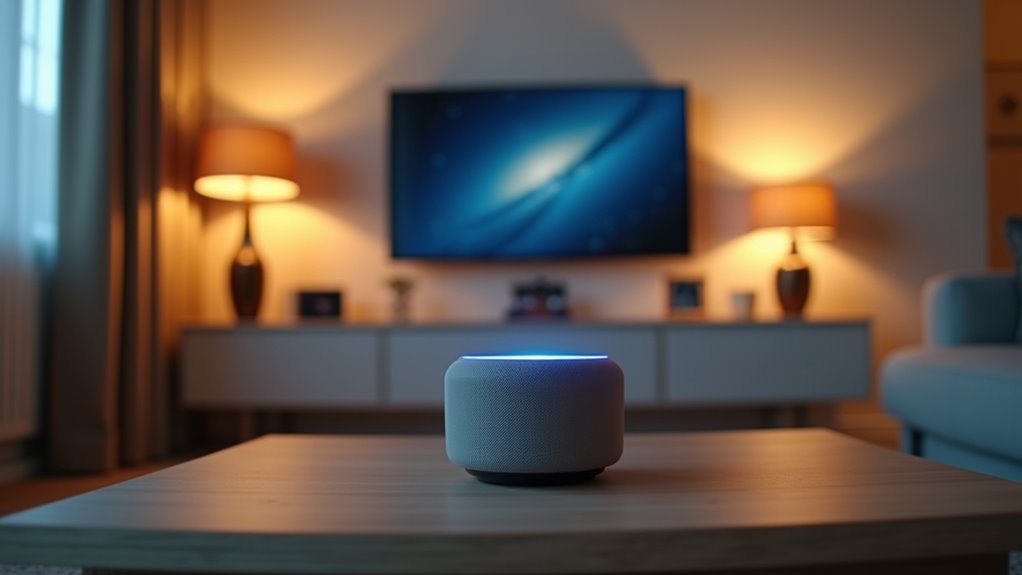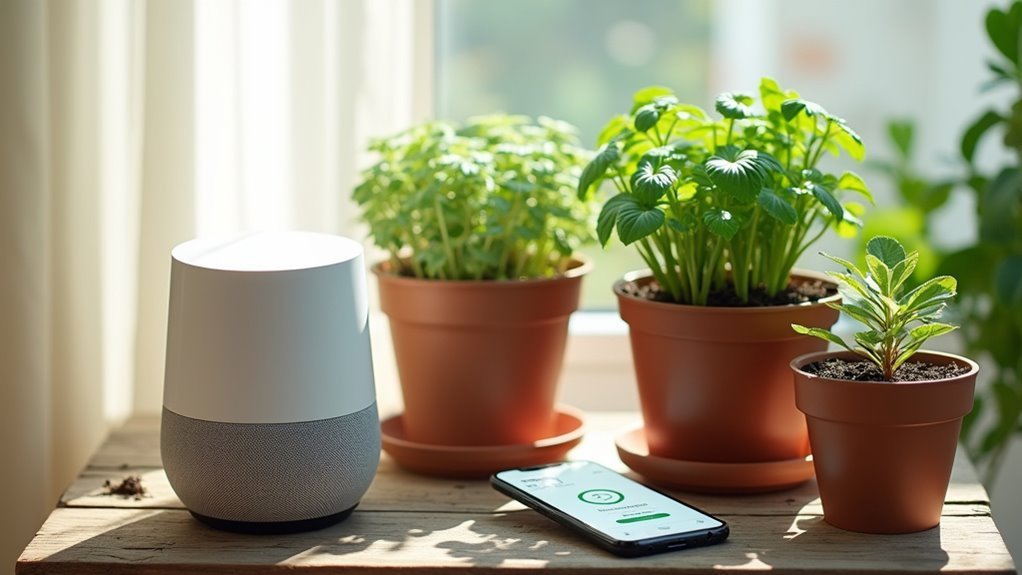You’ve probably wrestled with multiple remotes, struggled to sync your devices, or felt frustrated when your smart TV won’t connect to your sound system. Home entertainment automation can eliminate these daily headaches, but only if you approach it strategically. Most people plunge in without a clear plan and end up with a confusing mess of incompatible gadgets. There’s a better way that’ll transform your living room into a seamlessly integrated entertainment hub.
Define Your Entertainment Goals and Priorities

Why settle for juggling multiple remotes and wrestling with incompatible devices when you could streamline your entire entertainment experience?
Start by identifying your specific entertainment goals, whether that’s movie marathons, music sessions, or gaming adventures. This clarity helps you choose the right home theater control systems and smart devices for your needs.
Consider your budget carefully, prioritizing essential components like a quality projector and smart speakers that’ll deliver superior audio-visual performance.
Think about desired features such as customizable lighting scenes that automatically adjust for different activities. Your main objective should be to simplify device operation and create a seamless experience that eliminates frustration.
Select Your Control Hub and Compatible Devices
Once you’ve established your entertainment priorities, selecting the right control hub becomes your foundation for seamless automation.
Choose a versatile control hub like the Wink Hub 2, which supports Z-Wave, Zigbee, and Wi-Fi protocols to integrate multiple compatible devices effortlessly. Consider adding a smart speaker such as Amazon’s Alexa or Google Assistant for intuitive voice control throughout your home entertainment system.
A multi-protocol hub paired with voice control creates the backbone for effortless home entertainment automation.
Ensure your A/V equipment, including projectors like the Epson LS11000 or soundbars such as the Hisense HS218, works with your chosen hub to optimize performance.
Look for devices that support popular home automation platforms, enabling unified control through one interface. Always verify your hub’s specifications can handle your device count without experiencing connectivity issues or lag.
Set Up Automated Scenes and Voice Commands

After establishing your control hub and compatible devices, you’ll want to create automated scenes that transform your entertainment experience with effortless precision. These automated scenes let you program multiple actions simultaneously—dimming lights, lowering shades, and starting your projector with a single command.
| Scene Name | Actions | Trigger |
|---|---|---|
| Movie Night | Dim lights, close shades, start projector | Voice command |
| Gaming Mode | Adjust lighting, power on console, set audio | Button press |
| Music Time | Activate speakers, set mood lighting | Motion sensor |
Voice commands work seamlessly with smart speakers like Amazon Echo or Google Nest, enabling hands-free control of your home theater systems. You can create custom scenes and routines that respond to schedules or motion sensors, building a cohesive smart home ecosystem that enhances your automation experience.
Frequently Asked Questions
What Is the Cheapest Way to Automate Your Home?
Start with affordable smart plugs like Wemo Mini for $25 to control any device remotely. Add smart bulbs around $15 each, use your smartphone as a free control interface, avoiding expensive dedicated hubs initially.
What Are the Steps of Automation?
You’ll start by defining your goals, then choose network technology like Wi-Fi or Z-Wave. Next, you’ll acquire hardware including controllers and smart devices, set up integrated controls, and create automated scenes.
Do You Need a License for Home Automation?
You don’t need a license for basic DIY smart home installations. However, you’ll need permits for electrical work and should check local building codes. Complex systems may require licensed contractors for compliance.
What Is the Process of Home Automation?
You’ll start by defining your goals, then choose network technology like Z-Wave or Wi-Fi. Next, you’ll obtain hardware and software, establish scenes and routines, and consider professional installation for complex setups.





Leave a Reply